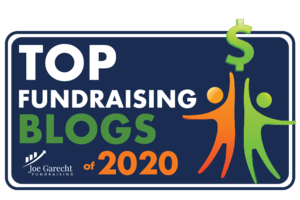It’s that time of year once again. It’s the season when most charities raise the most amount of money, perhaps because that’s when most fundraising activity happens. However, how tough will it be to raise money as the end of 2019 approaches?
You might be concerned about a recession on the horizon. You should be. We’re experiencing a record for sustained economic growth that quite  simply can’t go on forever. A recession is bound to hit eventually even without factoring in trade wars, political turmoil, disruptions to the global oil supply, and the threat of foreign wars.
simply can’t go on forever. A recession is bound to hit eventually even without factoring in trade wars, political turmoil, disruptions to the global oil supply, and the threat of foreign wars.
Among ultra-wealthy Americans, those with an average worth of $1.2 billion, 55 percent believe the US will enter a recession within the next year, according to the UBS Global Family Office Report. About 45 percent of respondents are sufficiently concerned that they are boosting their cash reserves, and 45 percent are realigning their investment strategies to mitigate risk.
While recession fears loom, a major economic downturn has yet to take shape. In other words, the economic climate is currently good from a fundraiser’s perspective. Could it be better? Sure. Always. But, it’s plenty good enough for you to anticipate a successful year-end fundraising effort. Consider some of the following six economic factors (as of Oct 4, 2019):
Gross Domestic Product. GDP is growing at a rate of 2.0 percent. Overall philanthropy historically correlates closely with GDP. So, if GDP goes up, we can anticipate that philanthropic giving will also increase.
Unemployment. The national unemployment rate is 3.5 percent, the lowest since 1969. If more people are working, more people will likely have funds with which they can donate.
Wages. Wages have increased 2.9 percent over 2018. Individual giving closely correlates to personal income. So, if personal income is rising, we can anticipate a rise in individual philanthropy.
Stock Market. The stock market, while volatile, has been performing well. This year, the Dow is up 13.92 percent, the NASDAQ is up 20.30 percent, and the S&P is up 17.76 percent. This is good for fundraising for two important reasons worth mentioning here. First, stock growth means that foundations and donor-advised funds will have more money with which to donate. Second, many individuals own stocks that have appreciated in value. When donating appreciated stocks, individual donors can avoid capital gains tax. In other words, even if someone can’t claim a charitable gift deduction under the current tax code, they can still derive a tax benefit by contributing appreciated securities.










 I won’t blame you if you’re feeling a bit pessimistic about philanthropy these days. However, I will respectfully suggest that you shouldn’t be overly worried. As I wrote in the current issue of
I won’t blame you if you’re feeling a bit pessimistic about philanthropy these days. However, I will respectfully suggest that you shouldn’t be overly worried. As I wrote in the current issue of  As you plan your appeal, be sure to segment your prospect file. Treating your prospects as one homogeneous group may make your job easier, but it won’t help you keep your job. You’ll achieve much better results if you segment your prospect pool and target each segment with a tailored appeal.
As you plan your appeal, be sure to segment your prospect file. Treating your prospects as one homogeneous group may make your job easier, but it won’t help you keep your job. You’ll achieve much better results if you segment your prospect pool and target each segment with a tailored appeal. I believe that charities must behave ethically, provide great services, develop a meaningful case for support, and inspire people, foundations, and corporations to give. Charities must partner with donors, report to them, engage them. Simply thinking that the rich, or anyone for that matter, should do more is not going to get the job done.
I believe that charities must behave ethically, provide great services, develop a meaningful case for support, and inspire people, foundations, and corporations to give. Charities must partner with donors, report to them, engage them. Simply thinking that the rich, or anyone for that matter, should do more is not going to get the job done.